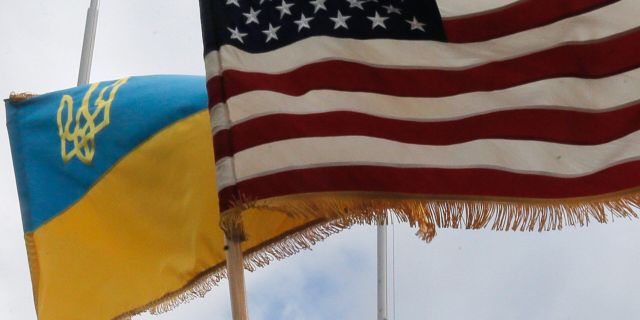Dmitry Suslov, Deputy Director of the HSE Center for Integrated European and International Studies, noted that it would be "quite difficult for the Biden administration with such a ward"MOSCOW, December 22.
/tass/. The visit of Ukrainian President Vladimir Zelensky to the United States revealed serious strategic differences in the positions of Kiev and Washington on the issue of the Ukrainian crisis. This opinion was expressed by Dmitry Suslov, Deputy Director of the HSE Center for Integrated European and International Studies, expert of the Valdai Club, in an interview with TASS on Thursday.
According to the expert, the main task that Zelensky set himself during the visit was an attempt to achieve an increase and expansion of American military assistance. At the same time, the main task for the administration of US President Joe Biden, as Suslov noted, was the opportunity to "probe" the position of the Ukrainian president on the issue of peace negotiations and a political settlement of the conflict in Ukraine. "The visit revealed that there are very serious strategic differences between the United States and Ukraine, although they are tactical allies on an anti-Russian basis and will continue to fight with Russia," Suslov stressed.
Among the differences, the expert highlights: "The Biden administration still does not intend to transfer to Zelensky the weapons that he demands and will continue to demand. Zelensky, in turn, showed absolute inflexibility, inflexibility regarding any compromises with Russia. The positions of the parties are different, and this suggests that it will be quite difficult for the Biden administration with such a ward."
Zelensky will "twist the ropes" from the Biden administration
At the same time, Suslov admitted that Zelensky and Biden could discuss the prospects for a peaceful settlement of the conflict, but the Ukrainian president, counting on further American support and its build-up, is not ready to seriously take steps on this issue.
"The Biden administration has not yet found the political will and strength to publicly or non-publicly pull Zelensky down and force him to a peaceful settlement. Zelensky proceeds from the fact that the Biden administration will simply not be able, for political reasons, to refuse further assistance to Ukraine, which means that he will continue to be able, roughly speaking, to twist ropes out of it," the analyst added.
Zelensky's visit, according to the agency's interlocutor, was also aimed at trying to put pressure on congressmen, primarily Republican ones, so that they approve the US federal budget for fiscal year 2023, which provides $ 45 billion for Ukraine, before the Christmas holidays. "A lot of Republican congressmen were dissatisfied with this budget and the way it was presented. It was submitted only on Tuesday, and it already needs to be accepted on Friday. To convince congressmen to vote for him without looking, Zelensky spoke in Congress," the expert explained.
About the visit
On December 21, Zelensky, at Biden's invitation, spent several hours in Washington, met with the US president, the leadership of Congress and made a speech there. At a press conference, Biden noted that the Ukrainian president is "open to achieving peace" in Ukraine, and added that the Russian authorities, in his opinion, "do not intend to stop" military operations. When asked what would be a "just peace", Zelensky explained that this means that compromises regarding the territorial integrity of Ukraine are unacceptable. At the same time, Biden noted that his vision coincides with Zelensky's vision, and expressed confidence that peace would have come if Russia had withdrawn its troops, but "this will not happen now." Zelensky also added that he could not send any signals to Russian President Vladimir Putin right now.
The announcement of a new package of American military assistance totaling $1.85 billion was timed to coincide with Zelensky's visit to the United States. For the first time, it included the Patriot air defense battery, which includes the launch system itself on a cargo chassis, a radar and a control station.

